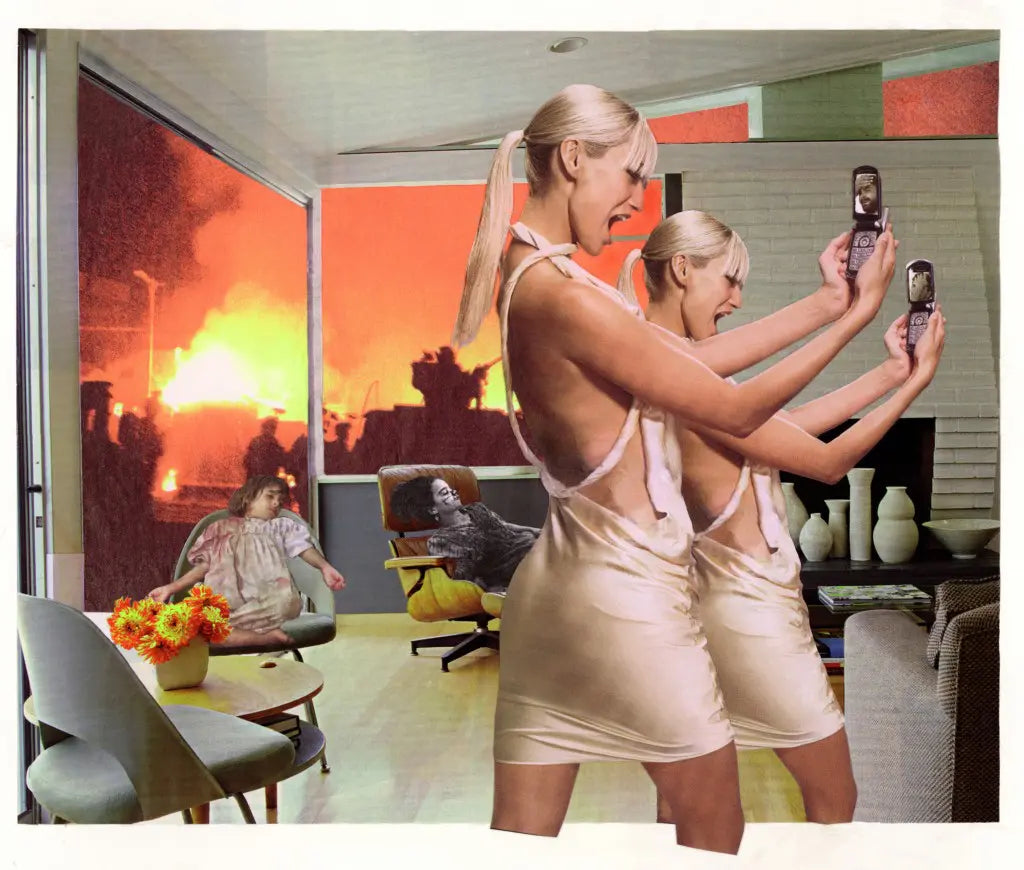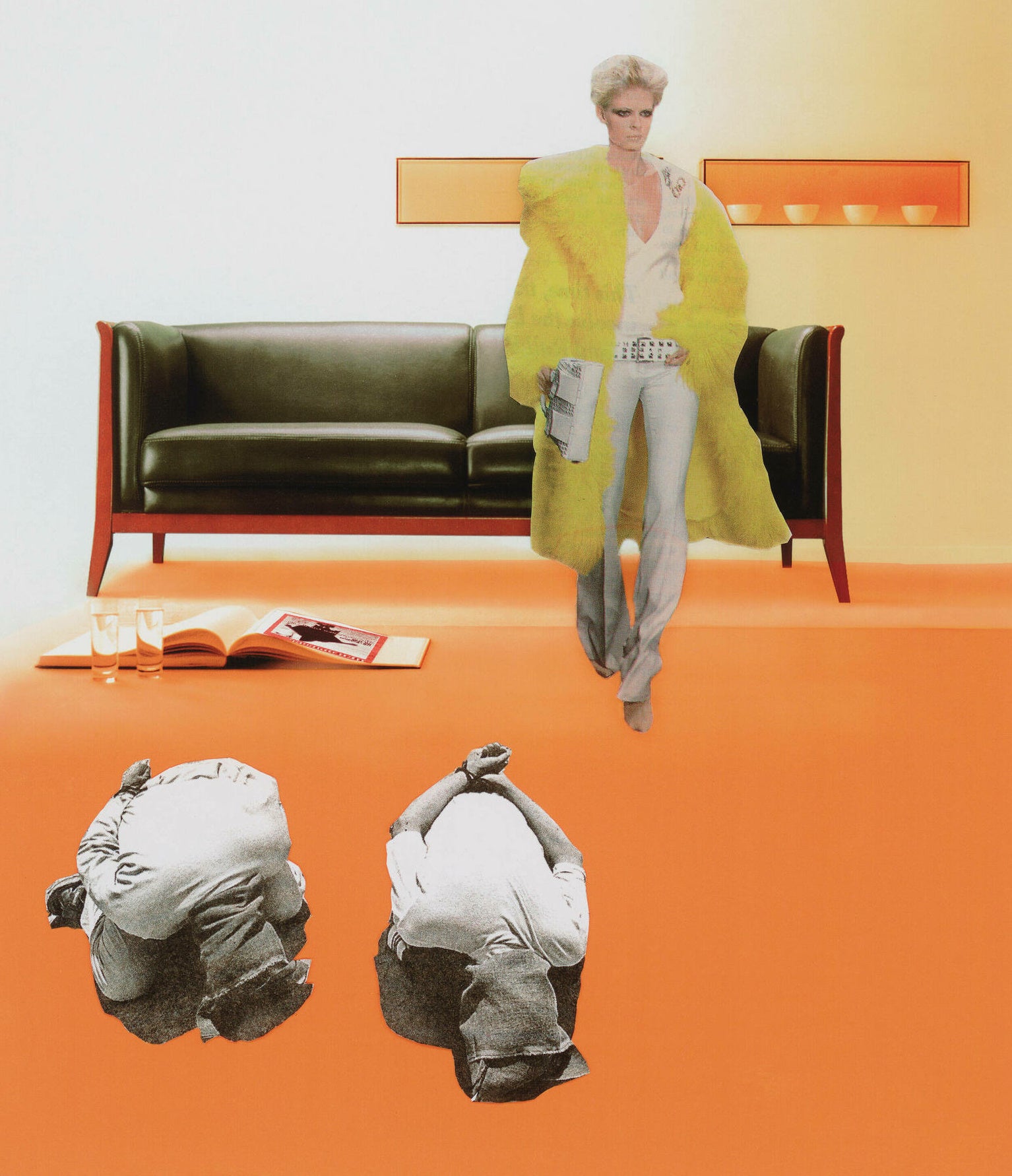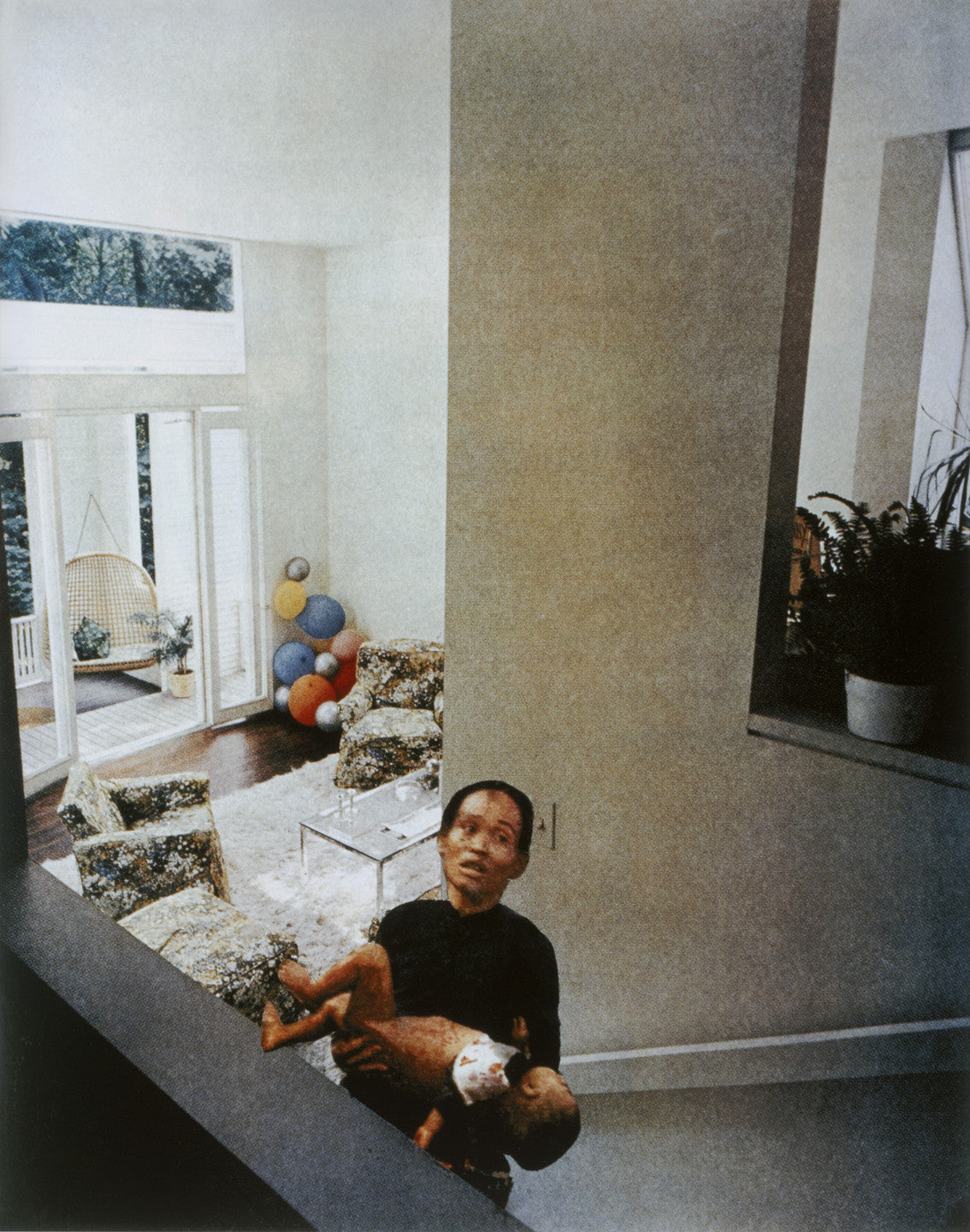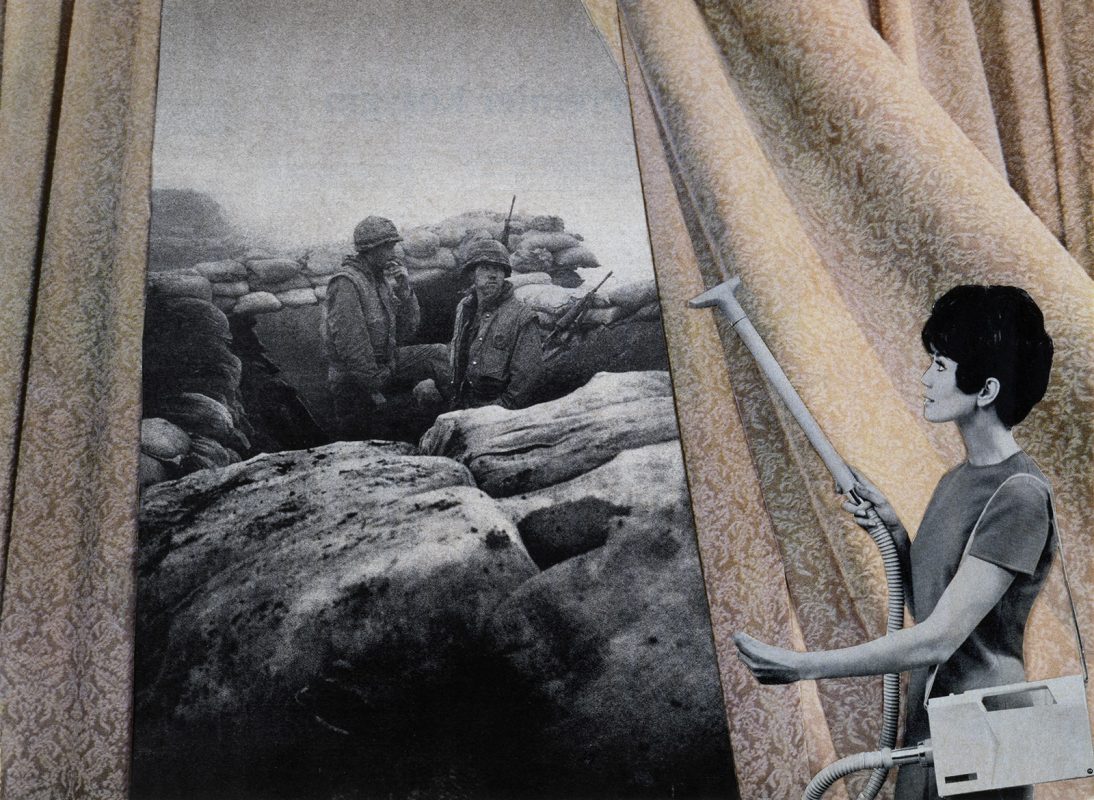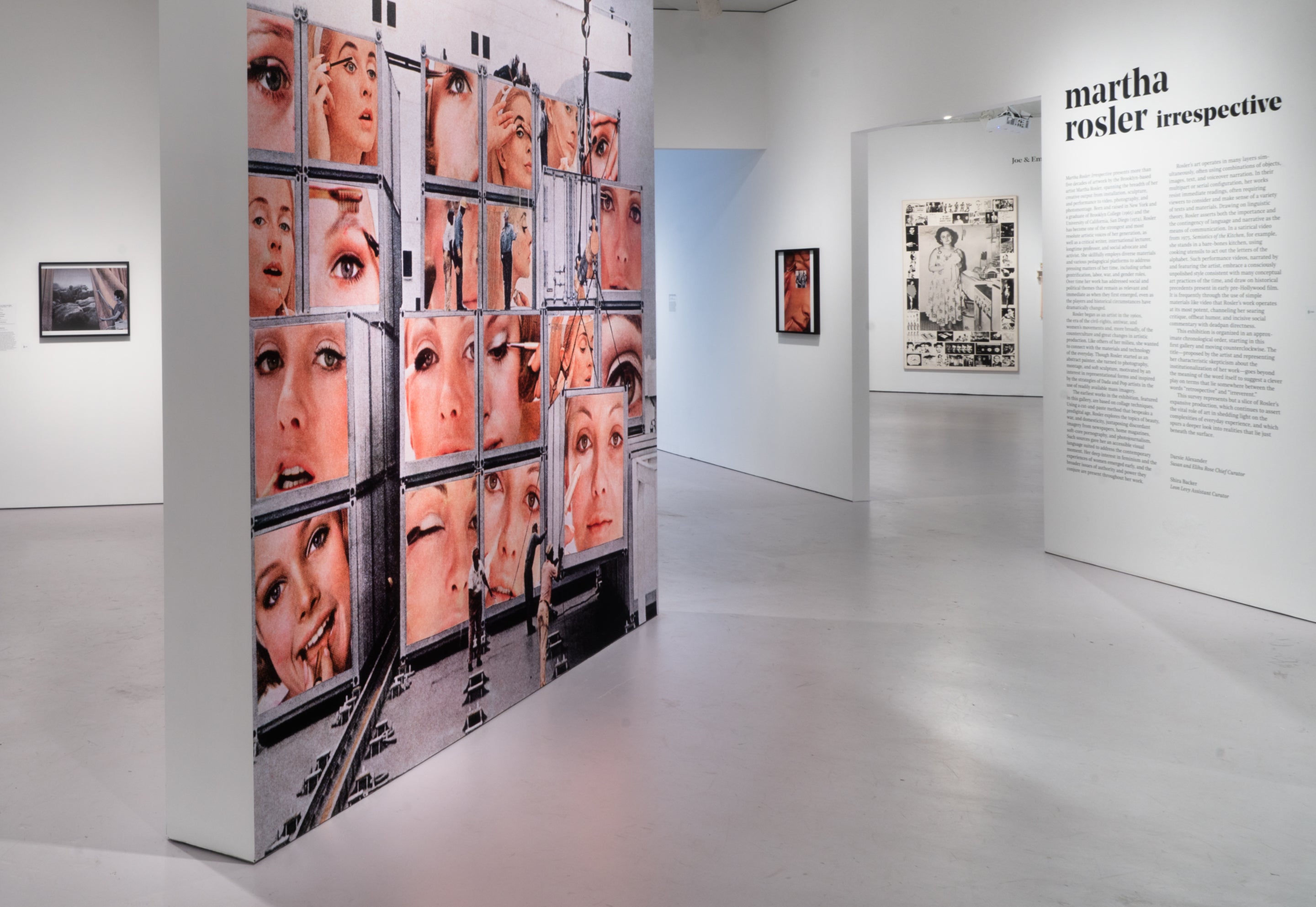
Martha Rosler, a prominent contemporary artist, challenges conventional boundaries of artistic expression, emerging as a critical and innovative voice on social, political and gender issues. With a multifaceted career that encompasses photomontage, performance, video and writing, Martha Rosler is recognized not only for her technical mastery, but also for her deep political and social awareness that permeates each work. This article explores Martha Rosler's lasting impact on contemporary art, highlighting her contributions to photomontage, feminisms in art, institutional critique, and public engagement.
What is Martha Rosler's artistic career?
Martha Rosler is an American artist known for her practices in video, photography, text, installation and performance. Born on July 29, 1943 in Brooklyn, New York, her work covers a wide range of social and political issues, including gender politics, racism and social inequality.
His most notable work includes photomontages, such as the series "Bringing the War Home" (1967–72), which criticizes the Vietnam War by superimposing images of war on photos of domestic interiors. Martha Rosler also explored representations of women in the mass media, challenging beauty standards in her series "Body Beautiful, or Beauty Knows No Pain" (1966–72).
In the 1970s, she expanded her practice to include performance and video, notable for works such as "Semiotics of the Kitchen" (1975), a satire on women's traditional roles in the kitchen. In "The Bowery in two inadequate descriptive systems" (1974–75), he addressed the representation of poverty in art and literature.
In the 1980s, Martha Rosler continued to address political and social issues in works such as "Domination and the Everyday" (1978) and "If It's Too Bad to Be True, It Could Be DISINFORMATION" (1985). His installation "Fascination with the (Game of) Exploding (Historical) Hollow Leg" (1985) transformed the gallery space into a war room.
In the 2000s, he revisited his photomontages in response to the war in Iraq with the series "Bringing the War Home: House Beautiful, New Series" (2004). In addition to her artistic practice, Martha Rosler is the author of several books that explore topics such as art, public space, transport and housing.
Internationally recognized, she received awards such as the Guggenheim Museum Lifetime Achievement Award in 2010. Martha Rosler teaches at several institutions and her activism goes beyond art, as evidenced in projects such as "If You Lived Here..." (1989), addressing homelessness with collaborations between artists, homeless people and activists. Martha Rosler continues to play a significant role in the contemporary art scene, offering works that challenge convention and explore the fundamental complexities of society.
What are the characteristics of Martha Rosler's works?
Active Political and Social Participation: Martha Rosler is known for her active political participation, addressing urgent social and political issues in her works. Her creations often question cultural norms, social inequalities, gender politics and the impact of war on everyday life.
Photo montage: One of Martha Rosler's trademarks is the use of photomontage as a means of expression. The series "Bringing the War Home" (1967–72) is a notable example, where he overlays images of war with photographs of domestic interiors, provoking a reflection on the relationship between war and everyday life.
Exploration of Female Representation: Many of her works address issues related to the representation of women in the media, challenging gender stereotypes. The series "Body Beautiful, or Beauty Knows No Pain" (1966–72) deconstructs representations of women in mass circulation magazines.
Performance and Video: Martha Rosler has expanded her practice to include performance and video. "Semiotics of the Kitchen" (1975) is a video performance that satirizes women's traditional roles in the kitchen while exploring issues of language and communication.
Political Awareness: His works seek to raise political and social awareness. The installation "Fascination with the (Game of) Exploding (Historical) Hollow Leg" (1985) transforms the gallery space into a war room, inviting viewers to reflect on the nature of violence and media representation.
Use of Pop Elements: Martha Rosler often incorporates elements of pop culture into her works, such as magazine advertisements and television images. This adds an additional layer of cultural critique and challenges conventional perceptions.
Commitment to Public Space: Many of his works explore the concept of public space, examining everything from architecture to issues of housing and gentrification. This reflects his interest in the intersection between the private and the public.
Collaborative Activism: In addition to her individual artistic work, Martha Rosler engages in collaborative projects and activism. "If You Lived Here..." (1989) is an example where Martha Rosler collaborated with artists, the homeless, and activists to address homelessness.
What are Martha Rosler's most famous works of art?
"Bringing the War Home" (1967–72): This series of photomontages is one of Rosler's most recognizable works. Martha Rosler combines images from the Vietnam War with scenes of domestic interiors, highlighting the disconnect between everyday life in the United States and the war abroad.
"Semiotics of the Kitchen" (1975): A video performance that became a landmark in the history of feminist art. In it, Martha Rosler parodies traditional cooking shows, exploring the gendered expectations associated with women's roles in the kitchen.
"The Bowery in two inadequate descriptive systems" (1974–75): This is an installation consisting of photographs and non-narrative texts, addressing the representation of poverty in art and literature. Martha Rosler questions the perceived inadequacies of forms of expression when portraying life on the Bowery in New York.
"If You Lived Here..." (1989): A collaborative project that addressed the issue of homelessness in New York. Martha Rosler invited artists, the homeless, and activists to contribute to the discussion and created an exhibition that investigated the complexities of this social problem.
"Fascination with the (Game of) Exploding (Historical) Hollow Leg" (1985): An installation that transforms the gallery space into a war room, incorporating maps, recruitment posters and TVs broadcasting images from war video games. The work questions the representation of war in the media.
"Culture Class" (2010): Although not a specific work, this is a book written by Martha Rosler that examines hierarchies within the art world. Martha Rosler criticizes the power structures and inequalities present in the production and consumption of art.
What is Martha Rosler's influence on contemporary art?
Martha Rosler has a marked influence on contemporary art, shaping the artistic scene with her innovative works that transcend traditional borders. Her multidisciplinary approach, which encompasses photomontage, performance, video and writing, positions her as a figure whose impact goes beyond aesthetics, penetrating social, political and gender complexities.
Martha Rosler's most evident contribution is her redefinition of photomontage as a form of artistic expression. The series "Bringing the War Home" (1967–72), which superimposes images of the Vietnam War over domestic scenes, questions the dichotomy between everyday life and the violent reality of war. This pioneering spirit in the fusion of disparate visual elements influenced a generation of artists who sought to convey political and social messages through the appropriation of images.
Furthermore, Martha Rosler played a crucial role in the feminist movement in art. Her works, such as "Semiotics of the Kitchen" (1975), critically explore women's traditional roles, using performance as a means of questioning gender expectations. This foray into deconstructing gender stereotypes influenced contemporary artists who continue to explore the complexities of female representation in society.
Institutional critique also benefits from Rosler's insight. His book "Culture Class" (2010) examines hierarchies in the art world, questioning power structures and influencing discussions about the dynamics present in artistic production, presentation and consumption.
Martha Rosler not only creates art but also promotes active audience participation. His collaborative project "If You Lived Here..." (1989), addressing homelessness, highlights art's ability to create meaningful dialogues between artists and communities. This focus on art as a tool for social engagement has inspired contemporary practices that seek to actively impact society.
Martha Rosler's influence on contemporary art lies not only in her technical innovations, but in her work's ability to transcend the aesthetic, provoking deep questions about social and political structures. His legacy endures, continuing to inspire artists to challenge conventions and use art as a transformative means of consciousness and action.

